Each year, working closely with a language consultant, students enrolled in the Field Methods class (LING 431, 432, 531, 532) embark on original research projects.
At the end of the academic year, the students present the results of their research to the department in a poster session. Below are a few notable Field Methods presentations from previous years.
Language: Dagaare (a Niger-Congo language spoken in Ghana and Burkina Faso)
Consultant: Alexander Angsongna
Instructor: Rose-Marie Déchaine
Language: Gitksan (a Tsimshianic language spoken in northern British Columbia)
Consultants: Barbara Sennott (Gitxsanimx), Vincent Gogag (Giyanimx), Hector Hill (Gitxsenimx)
Instructor: Lisa Matthewson
Language: Medumba (a Grassfields Bantu language spoken in the Nde division of the West Region of Cameroon)
Consultant: Hermann Keupdjio
Facilitator: Rose-Marie Dechaine
Language: ʔayʔaǰuθəm (a Central Salish language traditionally spoken both on Vancouver Island and on the coast of the mainland, north of Powell River, in BC)
Consultant: Joanne Francis
Instructor: Henry Davis
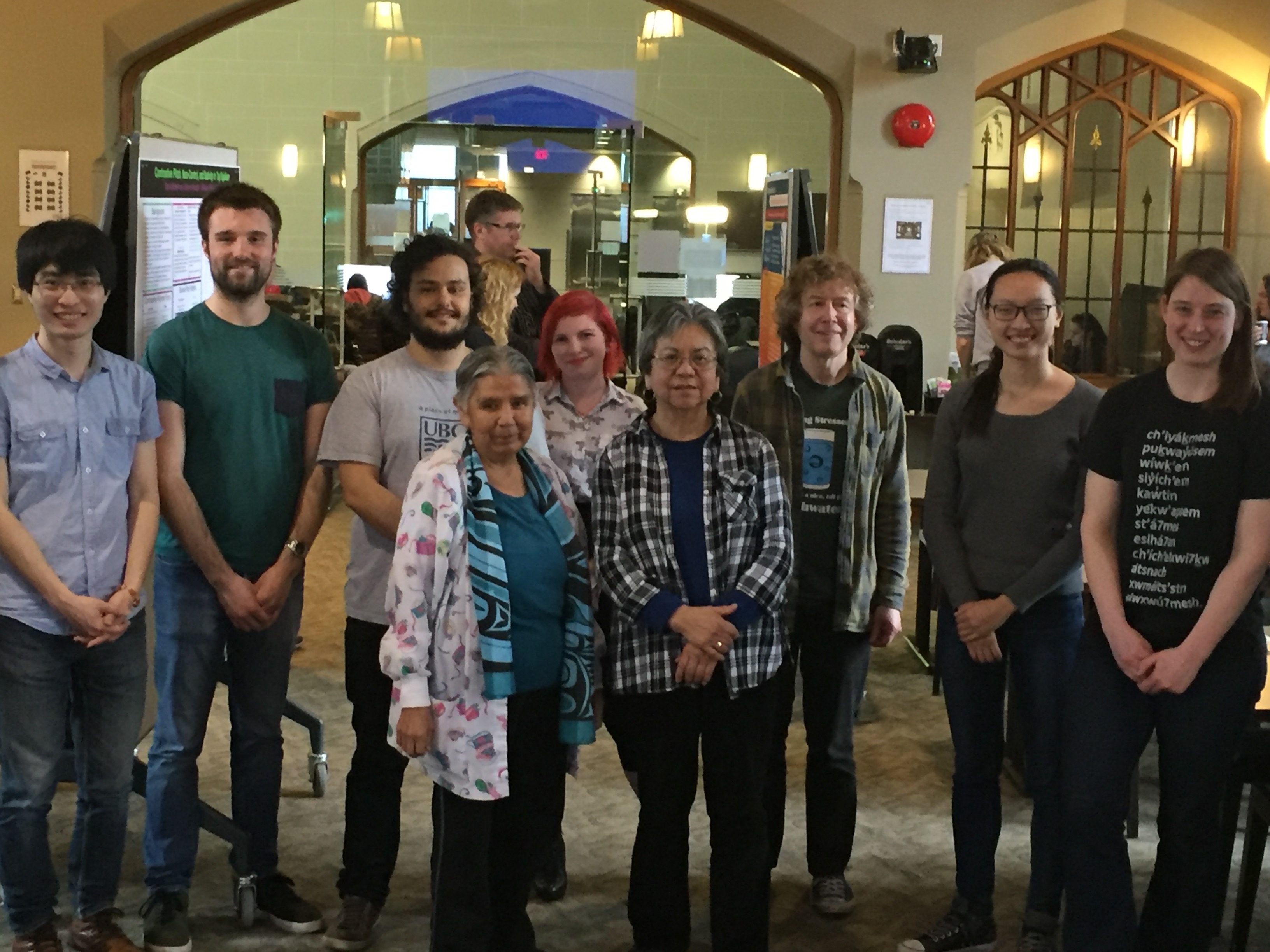
Language: Ktunaxa (a language isolate spoken in the southern interior of BC, as well as areas in Alberta, Washington, Idaho and Montana)
Consultant: Violet Birdstone
Facilitator: Martina Wiltschko
Language: Gitksan (a Tsimshianic language spoken in northern British Columbia)
Consultant: Barbara Harris
Instructor: Henry Davis
Projects:
Samuel Akinbo: Labialization in Gitksan
Katie Bicevskis: Tests for lexical aspect in Gitksan
Kyra Borland-Walker: Dialectal Variation in Vowel Quality in Gitksan
Kevin Dickie: How do you feel in English? How do you feel in Gitksan?
- J. Heins: Some uses of Gitksan gi
Elise McClay: Prosody of Ambiguity in Gitxsanimx–First Look
Avery Ozburn & Michael Schwan: Using Phonological CorpusTools for Gitksan Fieldwork
Aidan Pine: Connecting Linguistics to Language Learners: A Lesson Plan for Gitksan
Yimeng Wang: Translating New English Nouns into Gitxsan
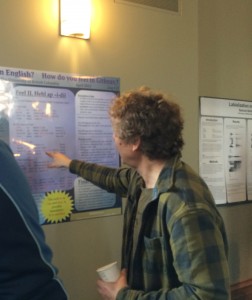
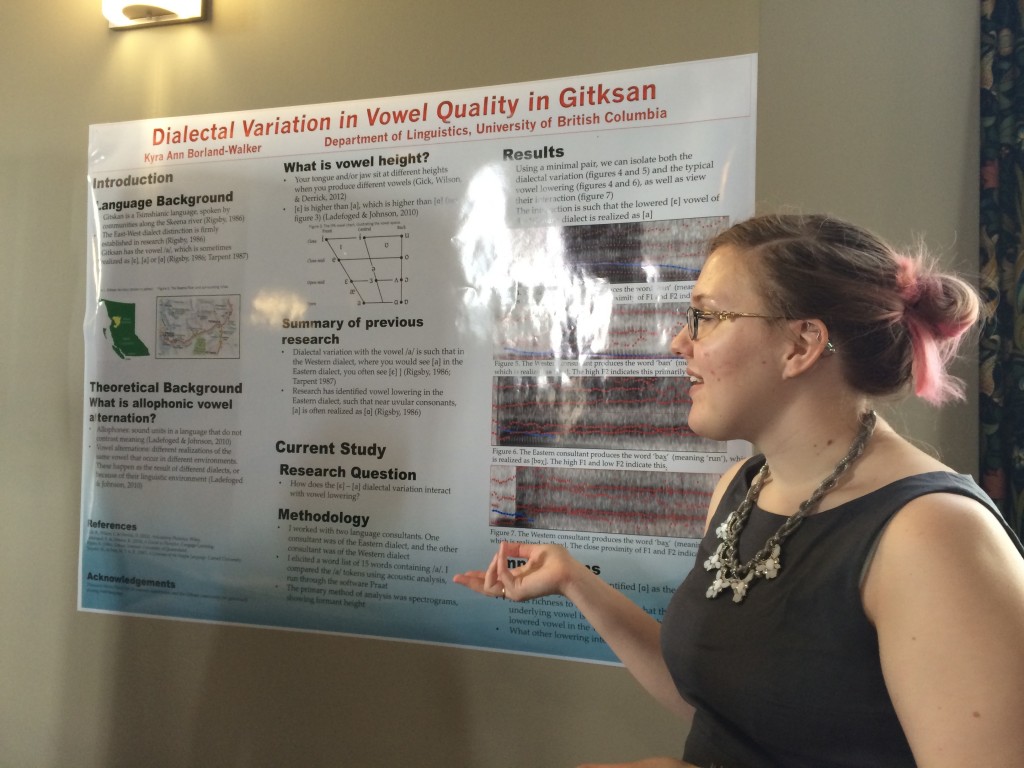
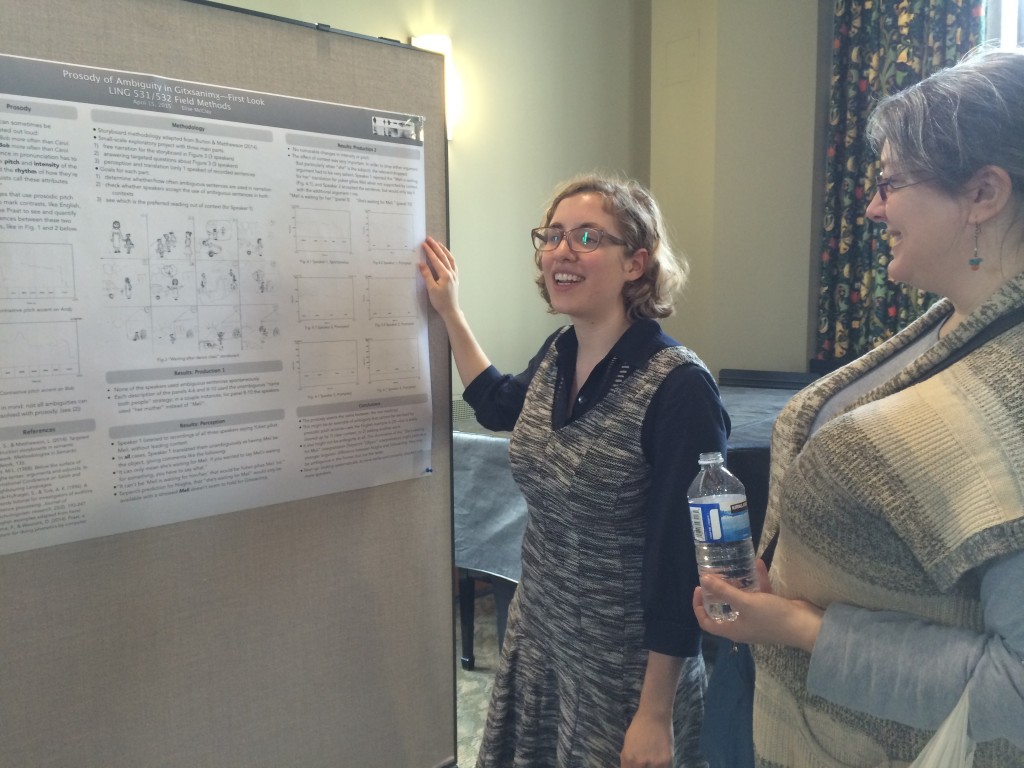
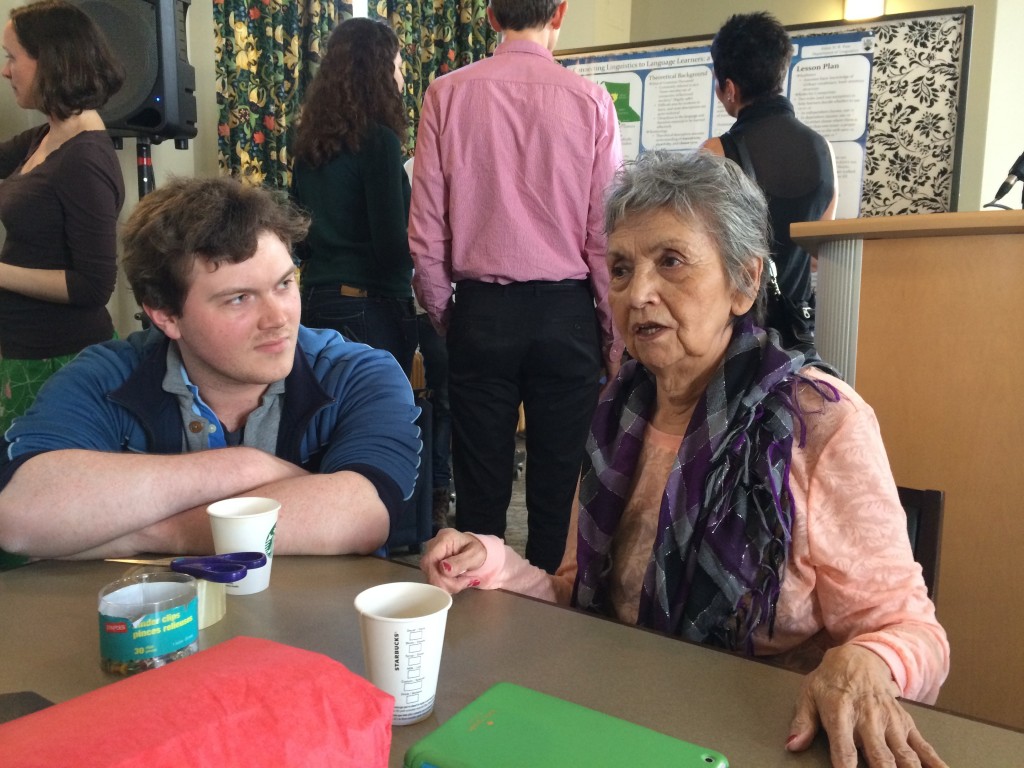
Language: Tlingit (a Na-Dene language spoken in southeastern Alaska and western Canada)
Consultant: Bessie Cooley & John Martin
Instructor: Lisa Matthewson
Projects:
Dylan Bandstra: Modification in the Tlingit Noun Phrase
Colin Brown: Towards a Unified Semantics of Tlingit Clefts and Determiners
Sihwei Chen: A Report on Tlingít Quantifiers and Scope
Evan Clarke: Tone in Tlingít
Vikanda Gonzales: Sluicing in Tlingit
Ka Wing Ng: Tlingit Classifactory Verbs
Mackenzie Skillin: The Tlingit Areal and Indefinite Human Object Marker Ku-
Storyboards (stories told by Keihéenouk’ John Martin):
Dylan Bandstra: ‘Sue’s Fingers’
Colin Brown: ‘John Starts Smoking Again’
Sihwei Chen: ‘There Are Many … And More Bears!’
Evan Clarke and Ka Wing Ng: ‘The Black Bear and the Salmon’
Vikanda Gonzales: ‘Two Girls and a Salmon’
Mackenzie Skillin: ‘The Seal Woman’

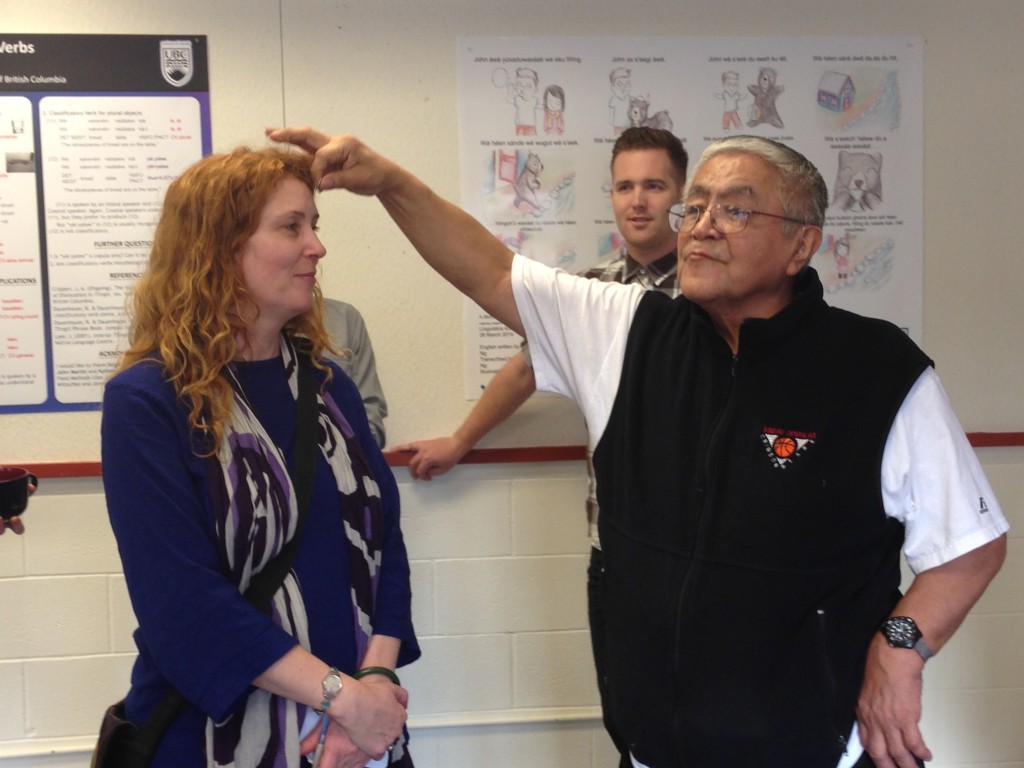
Language: Nata (a Lacustrine Bantu language spoken in northwestern Tanzania)
Consultant: Joash Johannes
Facilitator: Rose-Marie Déchaine
Projects:
Colin Brown & Herman Keupdjio: Information structure
Allie Entwistle & Zoe Lam: Verbal Tone in Nata
Naomi Francis: Modality in Nata
Erin Guntly & Yoshiko Yoshino: The general noun template
Jamie Ma: Nata passive
Adriana Osa & Sophia Walters: Tense and aspect in Nata
Emily Sadlier-Brown & Robert Furhman: Object marking
Dayanqi Si: Deverbal nouns
Language: Blackfoot (an Algonquian language of the northwestern plains in Canada and the US)
Consultant: Beatrice Bullshields
Facilitator: Strang Burton
Projects:
Andrei Anghelescu: Perceptual Salience of Blackfoot syllabic /s/
Clarissa Forbes: Blackfoot demonstratives: Compositionality and the lack thereof
Tianhan Liu: How to Express Desires in Blackfoot
Valerie Marshall: The Scope of Negation and Modals in Blackfoot: Is it Ambiguous?
Natalie Weber & Blake Allen. Blackfoot Pitch Accent: Insights from Morpho-Phonology